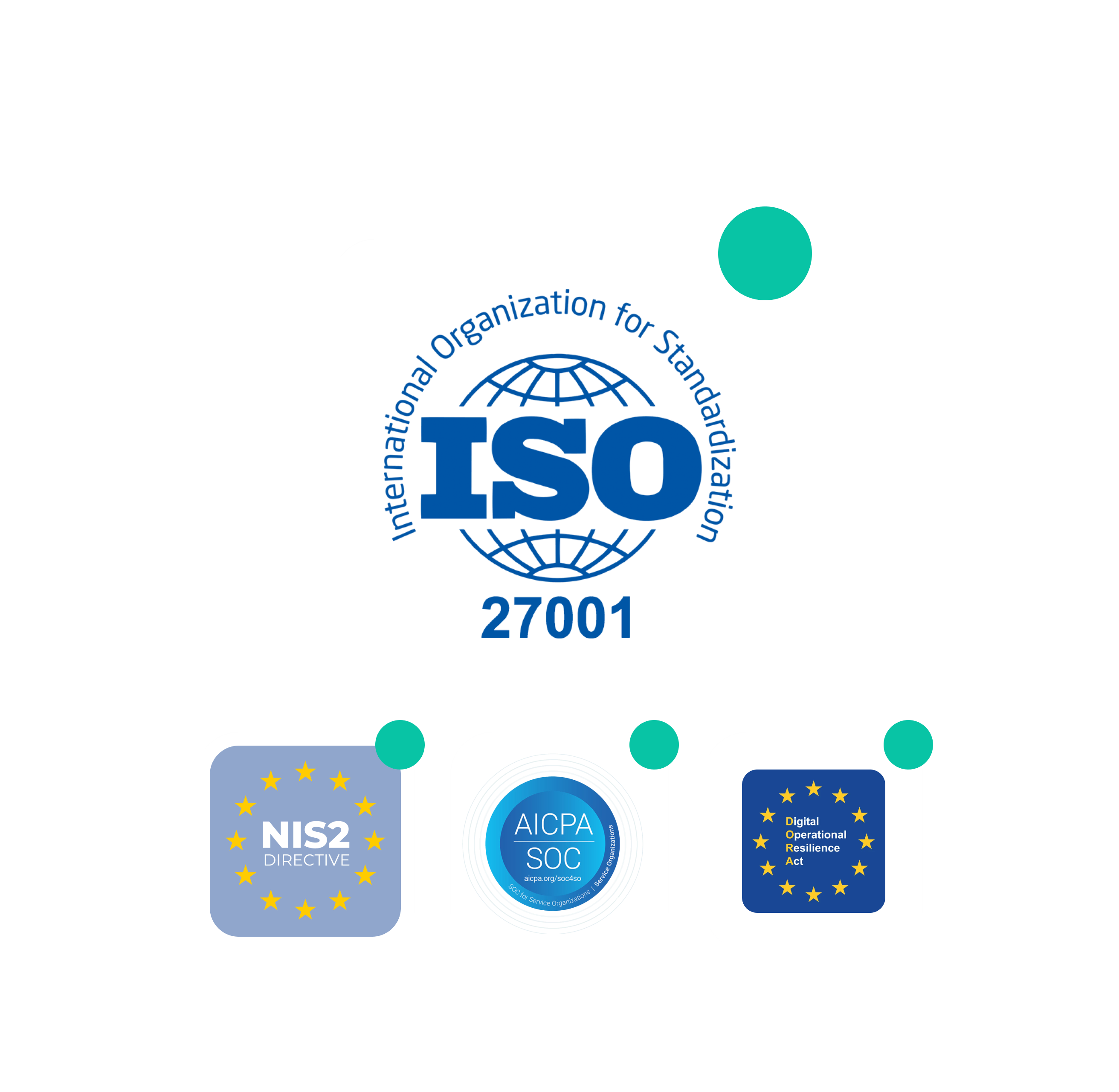Understanding cyber compliance: challenges and solutions

Benefit from effective IT support
Discover our all-in-one solution
La cyber compliance is a subject that makes many businesses shudder. Between theRise of cyberattacks, the constant evolution of regulations and the need to maintain customer trust, the question is no longer whether the cybersecurity must be a priority... but how can it be made concrete and operational.
However, most teams are struggling to find a clear approach for their cyber compliance. What are the real obligations? What are the benefits of a rigorous policy? And above all, where do you start?
In this article, _rzilient helps you better Understand what cyber compliance is and why it has become indispensable. We will also show you how to implement it effectively in your organization.
What is cyber compliance?
Cyber compliance refers to all the measures taken by a company to comply with the laws, standards and regulations that govern information system security and data protection. In other words, it's the ability to demonstrate that you meet applicable cybersecurity and privacy requirements. It is based on several pillars:
- Legal compliance : for example, compliance with the General Data Protection Regulation (GDPR) or the NIS2 directive.
- Normative compliance : alignment with recognized standards such as ISO 27001 or SOC2 that structure security policies.
- Contractual compliance : commitments made with your customers or partners.
In summary, cyber compliance is not an option. It is part of a global approach to protect your company's systems, information and reputation.

The major challenges of cybersecurity for businesses
Cyber compliance is not just an administrative exercise. Above all, it is a strategic lever. Here's why:
- Risk reduction : by securing access, encrypting data and controlling user rights, you reduce the vulnerabilities exploited by cybercriminals.
- Protection of privacy : customers and employees expect solid guarantees on the use and storage of their personal data.
- Building trust : showing that you respect high security standards helps to reassure your customers, partners and investors.
- Avoidance of sanctions : non-compliance with the GDPR or NIS2 can lead to heavy fines or even activity restrictions.
- Operational continuity : anticipating incidents and having response plans is essential to limit the impacts on your business.

The main regulations and standards you need to know
Dealing with the regulatory jungle can seem daunting. Don't worry: here is an overview of the texts and normative standards the most common ones.
The RGPD
Entered into force in 2018, the RGPD regulates the collection, processing and storage of personal data within the European Union. It imposes specific obligations:
- Appoint a DPO (Data Protection Officer).
- Keep a record of treatments.
- Implement appropriate security measures.
- Report data breaches within 72 hours.
The GDPR has profoundly changed the culture of confidentiality and remains unavoidable.
The ISO 27001 standard
ISO 27001 is an international standard that defines best practices in information security management. It is based on an Information Security Management System (ISMS) structured around:
- Risk analysis and management.
- The establishment of security policies and procedures.
- Continuous improvement.
ISO 27001 certification is a differentiating asset for companies wishing to prove their level of maturity in cybersecurity. So think about it.
The SOC 2 standard
SOC 2 is particularly relevant for technology companies, especially those offering cloud services. It attests to good data governance through an independent audit based on the five trust criteria:
- security
- Availability
- Integrity of treatment
- Confidentiality
- Privacy.
Unlike ISO 27001, which is based on a management approach, SOC 2 focuses on the effectiveness of real operational controls. It is often required in B2B tenders in the United States and is gaining adoption in Europe.
[_rzilient has been SOC 2 type II certified since June 2025!]
The NIS2 directive
The NIS2 directive reinforces the obligations of organizations considered essential or important (in particular in energy, health, transport, or digital services). In particular, it requires:
- Identifying and managing cyber risks.
- The adoption of rigorous technical and organizational measures.
- Notification of major incidents within strict deadlines.
It marks a decisive step in homogenizing digital security in Europe.
The DORA regulation
The DORA regulation specifically targets the financial sector and critical digital services. Its objective: to strengthen operational resilience in the face of cyber and technological incidents. It provides for:
- Penetration test requirements.
- Supervision of external service providers.
- Centralized risk management.
DORA has been applicable since 2025 and has an impact on many banking and insurance players.
Common cyber compliance challenges
Setting up a compliance policy is not without difficulties (to be taken into account to best overcome them):
- Regulatory complexity : businesses are often confronted with a pile of texts that are difficult to interpret.
- The multiplicity of tools : juggling between different software and repositories generates information silos.
- Raising awareness among teams : without training, employees become the weakest link in cybersecurity.
- Ongoing follow-up : compliance is not fixed, it is constantly evolving with threats and new obligations.
- The documentation of the evidence : keeping reliable and up-to-date records is essential in the event of an inspection.
How do you implement an effective cyber compliance strategy?
We share with you a summary of the key steps to build a structured approach:
1 - Perform an initial audit:
Evaluate your obligations (RGPD, NIS2, DORA...) and identify deviations from applicable requirements.
2 - Define a clear security policy:
Formalize your commitments: access management, encryption, backups, incident response plan.
3 - Implement technical and organizational measures:
- Encryption of sensitive data.
- Rights and identity management.
- Monitoring and alerts.
4 - Raise awareness and train your teams:
Each employee must know the right reflexes in the face of threats (phishing, identity theft, etc.).
5 - Manage compliance on an ongoing basis:
Schedule regular reviews, keep records up to date, and document all of your checks.
6 - Rely on an all-in-one platform:
With _rzilient, you centralize the management of cybersecurity: monitoring, automations, outsourced IT support and consolidated reporting.
The benefits of good cyber compliance management
Adopting a proactive approach to cyber compliance has many benefits:
- Tangible risk reduction : fewer vulnerabilities, more peace of mind.
- Competitive advantage : demonstrating your cyber maturity reassures your customers and partners.
- Cost control : avoid sanctions, but also expenses related to crisis management.
- Valorization of your employer brand : data protection and digital responsibility are high expectations of talents.
- Scalable compliance : a structured approach makes it possible to adapt quickly to new regulatory requirements.

_rzilient supports you in the management of cyber compliance
Cyber compliance is not a constraint that we suffer from, but a lever that we pilot. With our all-in-one platform, you benefit from:
- Of a real-time monitoring of your computer equipment and your security measures.
- Customized workflows to meet the specificities of your sector and your regulatory obligations.
- Of a outsourced and human IT support that supports your teams on a daily basis.
- Of reports and dashboards consolidated that facilitate the documentation of evidence of compliance.







